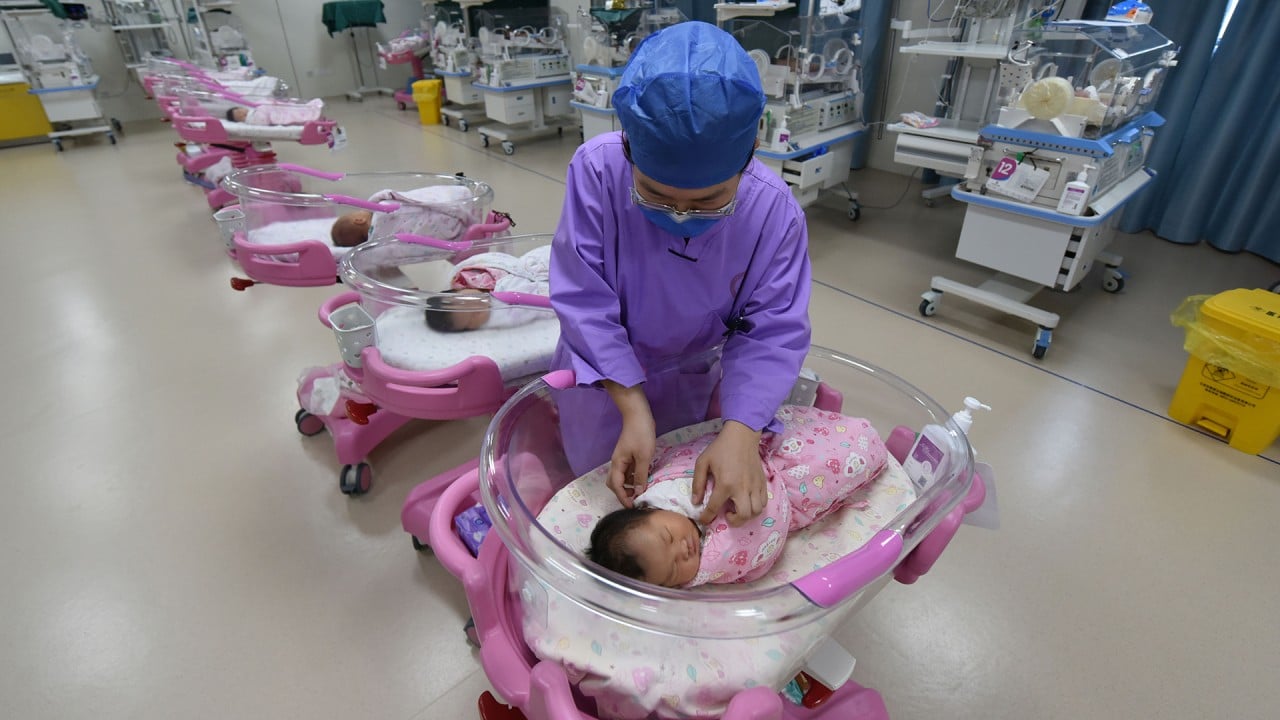
Explainer | 4 things to consider as India overtakes China as world’s most populous nation
- One-child policy, introduced in 1980, believed to have reduced number of births in China by around 400 million
- China’s population dropped for first time in six decades last year, despite introduction of two-child policy in 2016
India replaced China as the world’s most populous country last month according to the United Nations, which had long predicted such a shift.
The huge populations of the two countries have been the foundation for decades of comparisons between the dragon and the elephant in terms of their economic strength, political systems and development modes.
The change has stirred a lot of discussion in China as its economic growth momentum slows and rising labour costs and US decoupling efforts push many manufacturers to move to countries that include India.
Here are some key aspects of the change that you need to know about.
1. China-India population dynamics
China’s population was 542 million when the people’s republic was founded in 1949, about 50 per cent higher than India’s.
The dramatic reversal since then was largely the result of changes to Beijing’s population policy over the past four decades or so.
China’s population grew explosively during the time of Mao Zedong, who believed that “more people” equalled “more power”, reaching 937 million by the time of his death in 1976.
Enshrined as a national policy and strictly implemented for 35 years, the one-child policy was believed by Beijing officials to have reduced the number of births by around 400 million.
China’s population dropped for the first time in six decades last year, even though a two-child policy was implemented from 2016 and followed by other government incentives and policy relaxations.
John Wilmoth, director of the UN Population Division, said last week that China’s population had already peaked and “could drop below 1 billion before the end of the century”, but India’s population would expand for several more decades.
2. Is the size of China’s population vital for its economy?
Cheap labour was an important consideration for overseas investors who swarmed into China from the 1980s to manufacture products.
Together with Beijing’s access to developed markets through its hard-earned World Trade Organization membership in 2001, it saw low-priced made-in-China products reach every corner of the world.
It also helped turn China from a poor agricultural nation into a rapidly industrialising economy and the world’s largest exporter.
China’s economic slowdown since 2011 coincided with a turning point in the size of its labour force and fuelled Chinese concerns that India would use its demographic advantage to repeat China’s success.
The median age in China in 2020 was 38.4 – 10 years older than India’s – according to UN estimates. The global median age was 30.9.
The average Chinese worker’s monthly pay rose to 8,903 yuan (US$1,287) in 2021 from 3,483 yuan a decade earlier. The 2021 figure in India was 17,017 rupees (US$208), according to a report released by the International Labour Organization last year.
In addition to a shrinking labour force, China also has a rapidly ageing population that threatens the national pension system and the vigour of domestic consumption.
Wary of Japan’s lost decade of economic stagnation – which was accompanied by a shrinking and rapidly greying population – the Chinese authorities have stepped up efforts to increase the state pension pool, boost childbirths and rely more heavily on robotics, artificial intelligence and other hi-tech developments to improve productivity and the quality and value of manufactured goods.
3. Demographic dividend vs talent dividend
The Chinese authorities have tried to downplay population concerns, framing them as a quantity versus quality debate.
They say the cost of labour is just one of the factors affecting investors’ decisions and a country’s economic performance, highlighting China’s political stability, large pool of engineering talent, massive market, sophisticated industrial clusters and welcoming business environment.
Speaking at his first news conference as premier, Li Qiang dismissed market concerns about the demographic change, saying China’s demographic dividend had not disappeared and its talent dividend was getting under way.
From AI to IoT, 4 areas where China’s smart cities are making a difference
“We shall not just look at the size of the population, but also look at the scale of the high-calibre workforce,” he said in mid-March.
More than 240 million Chinese had received higher education, he said, while the average length of education received by newcomers to the workforce had increased to 14 years.
The country also exceeds India in a variety of parameters, such as length of education, foreign direct investment and innovation.
China’s gross domestic product (GDP) in 2021 was US$17.7 trillion, compared with India’s US$3.2 trillion, and its per capita GDP was more than five times that of its South Asian competitor.
4. Will automation, robotics and AI help?
Beijing’s equanimity about China’s declining population, which will remain the world’s second largest for decades to come, is bolstered in part by its emphasis on improving productivity and increasing the use of technologies.
The recent release of ChatGPT, a talkbot developed by OpenAI, has raised the prospect of a great improvement in the efficiency of work and also generated fears about the loss of jobs.
Chinese leaders have long made efforts to increase automation and the use of robotics in exporting provinces like Guangdong, where wage rises have haunted manufacturers for almost a decade.
China had 1.22 million industrial robots by the end of 2021, including 268,195 installed that year, according to data released by the International Federation of Robotics. A decade earlier it had just 74,317.



